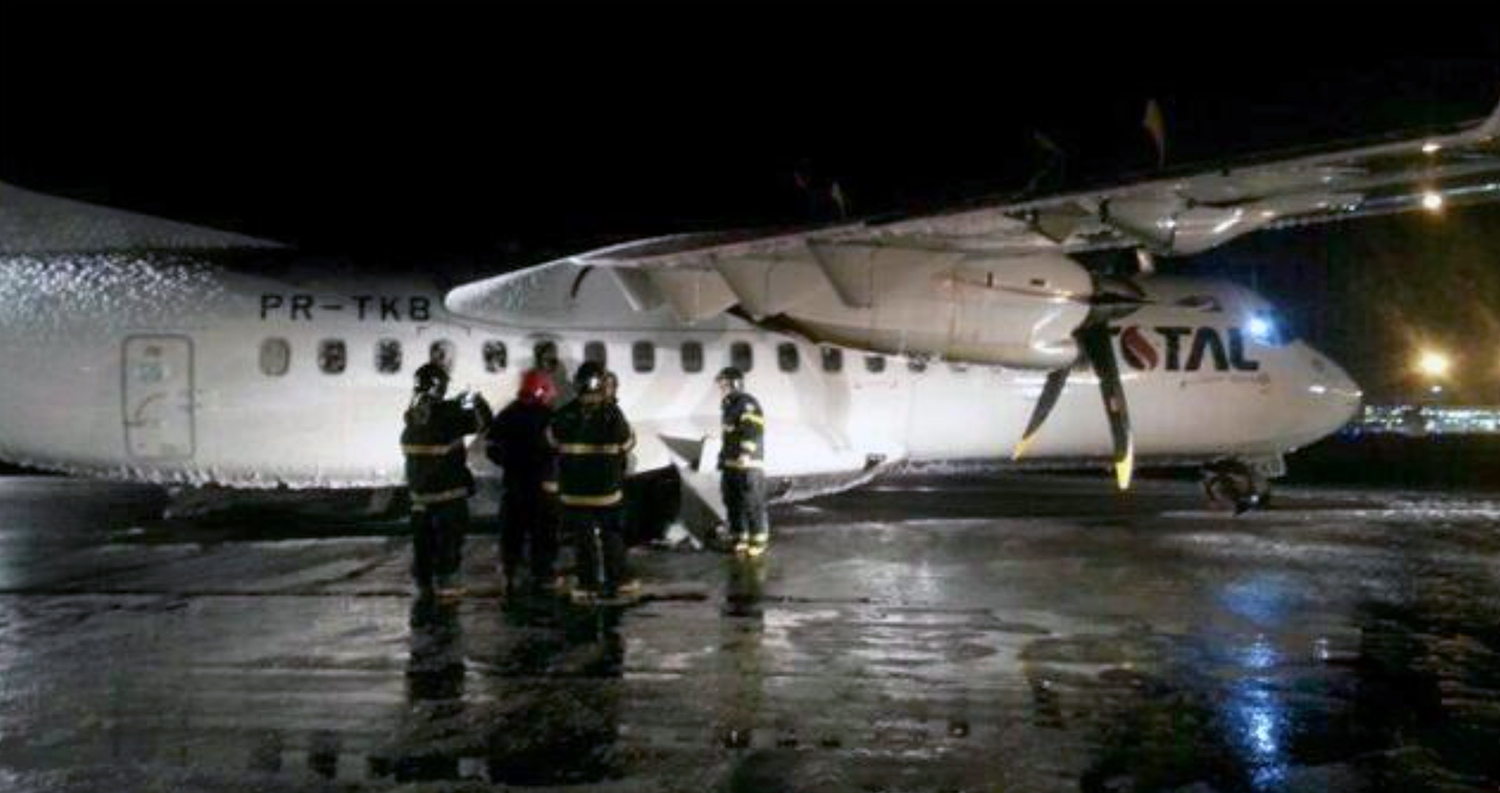Country
Crash of an ATR42-512 in Serui
Date & Time:
Sep 9, 2024 at 1035 LT
Registration:
PK-YSP
Survivors:
Yes
Schedule:
Biak - Serui - Jayapura
MSN:
559
YOM:
1998
Crew on board:
6
Crew fatalities:
Pax on board:
42
Pax fatalities:
Other fatalities:
Total fatalities:
0
Circumstances:
During the takeoff roll from Serui-Stevanus Rumbewas Airport Runway 28, the crew decided to abort for unknown reasons. The airplane veered off runway to the left. While contacting soft ground, it lost its undercarriage and slid for few dozen metres before coming to rest nearby a wooded area. All 48 occupants evacuated safely. The airplane landed at 1019LT from Biak and was taking off for its last leg to Jayapura when the accident occurred.
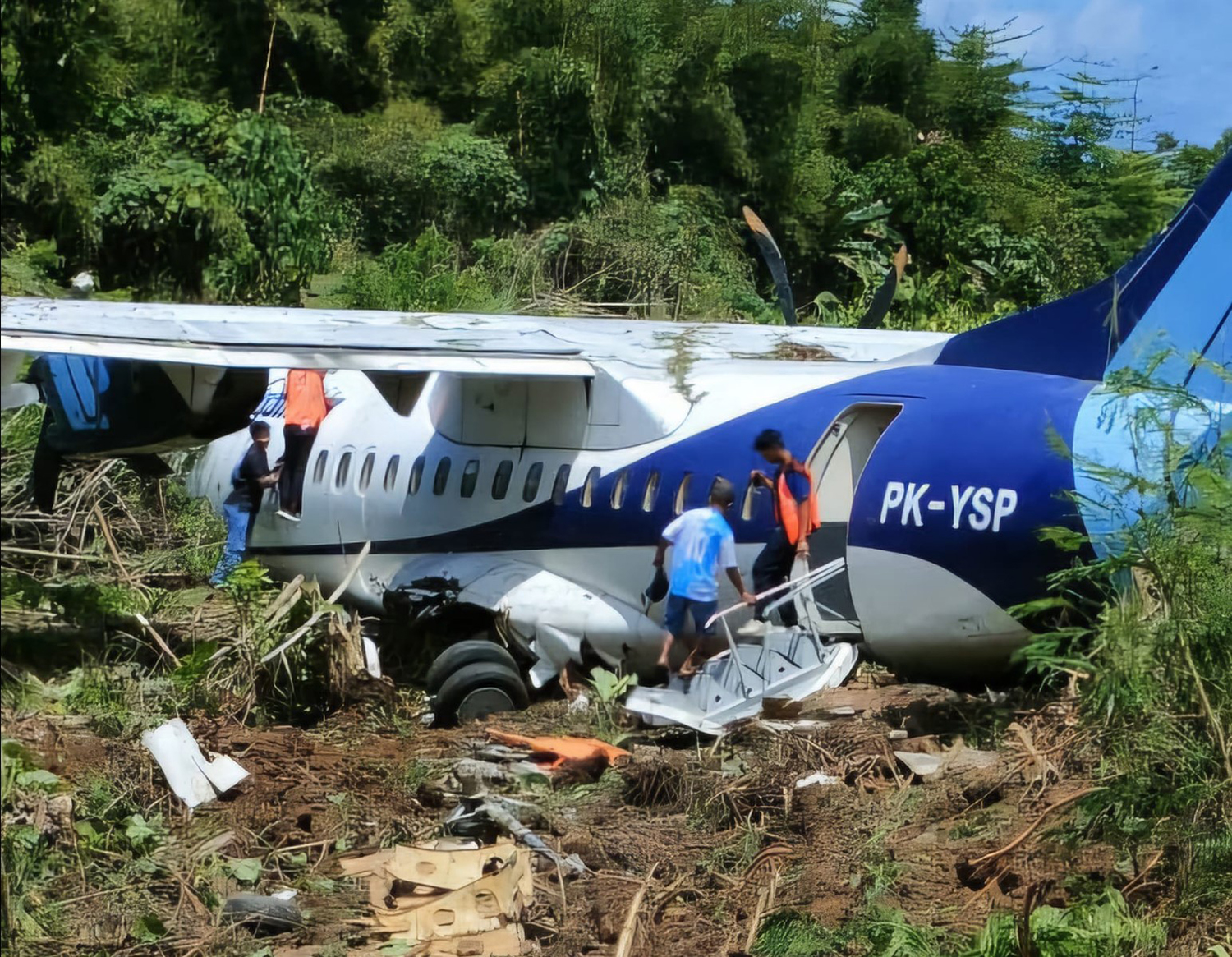
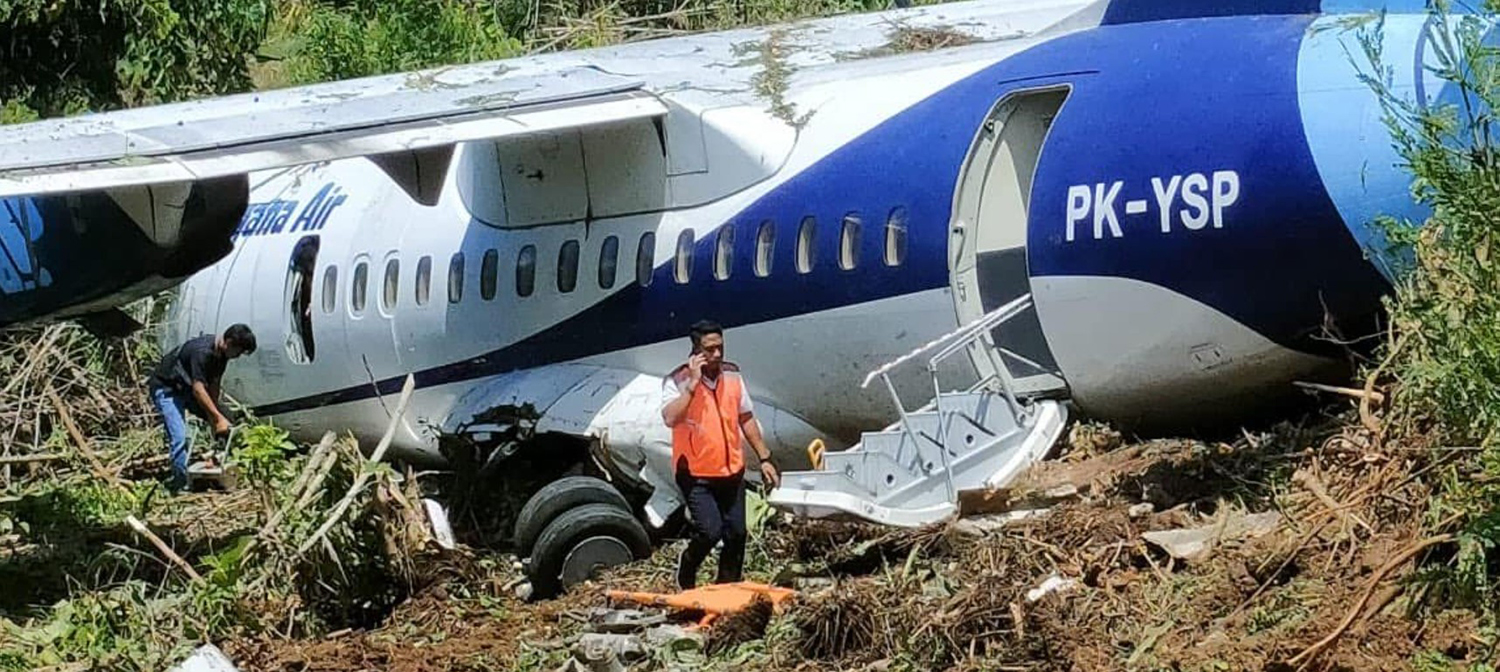
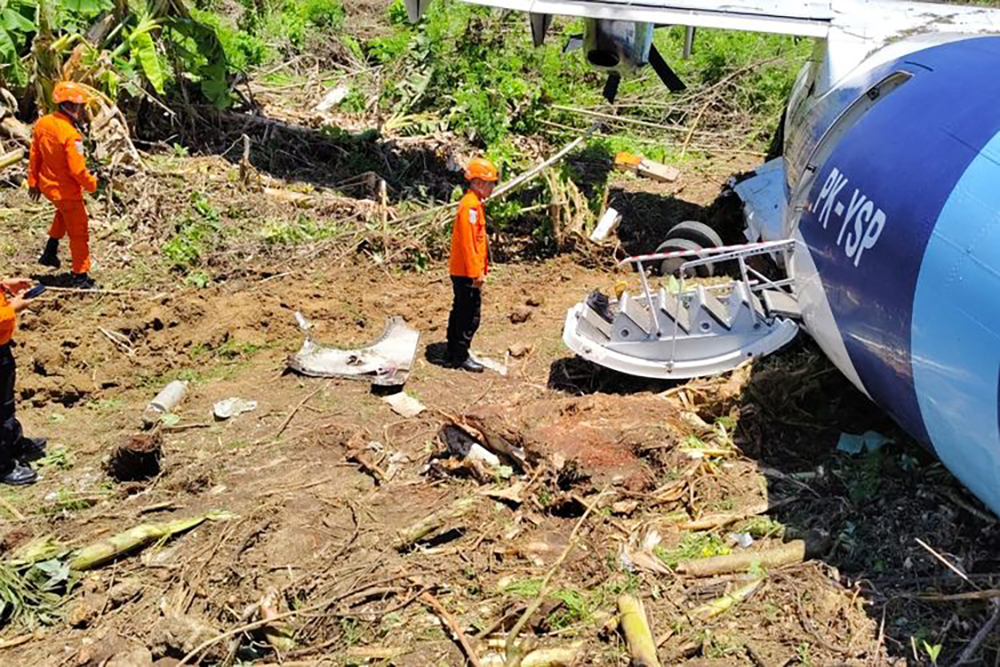
Crash of an ATR42-500 off Bukoba: 19 killed
Date & Time:
Nov 6, 2022 at 0843 LT
Registration:
5H-PWF
Survivors:
Yes
Schedule:
Dar es-Salaam – Bukoba
MSN:
819
YOM:
2010
Flight number:
PW494
Crew on board:
4
Crew fatalities:
Pax on board:
39
Pax fatalities:
Other fatalities:
Total fatalities:
19
Captain / Total hours on type:
11919.00
Copilot / Total hours on type:
1700
Aircraft flight hours:
16893
Aircraft flight cycles:
16610
Circumstances:
During the approach, the crew encountered heavy rain and thunderstorms with lightning as well as significant crosswind and turbulence. During the final approach, several nose down inputs on the control column increased the descent rate of the aircraft. The EGPWS SINK RATE-SINK RATE alert triggered 15 seconds before the accident. Then the EGPWS PULL-UP warning triggered, followed by flight crew's nose up input on control column, around 2 seconds before the aircraft struck the water surface of Lake Victoria about 500 meters short of runway 31 threshold. The impact with the water caused significant damage to the aircraft fuselage followed by water entering the cabin and flight deck. There was no fire but the aircraft was damaged beyond economic repair. Of the 43 persons on board, 17 passengers and 2 pilots lost their lives while 22 passengers and 2 cabin crew members survived without serious injuries. It is considered that conducting an unstabilized final approach in poor weather conditions that could not allow clear visual contact with the ground was a major factor in this accident.The decision of the Pilot in Command to negotiate his way through the narrow weather window in order to reach the runway,the high crew workload caused by the presence of thunderstorms, the variable cross wind, rain and turbulence as well as the absence of air traffic services at Bukoba airport were contributory factors. The aircraft sank by a depth about 3-4 metres.
Probable cause:
The accident was caused by an unstabilized final approach to runway 31 of Bukoba Airport conducted in poor weather conditions which did not allow clear sight of the terrain. This led the aircraft to strike the water on the lake surface.
The following contributory factors were indentified:
- The decision of the pilot-in-command to proceed with the final approach without the required weather minima in order to reach the runway instead of diverting to Mwanza.
- The gusting crosswind which prevailed at the time of final approach.
- The heavy rain and turbulence at that material time.
- The absence of air traffic services at Bukoba Airport.
- High rate of descent at low altitude.
- No immediate response to the EGPWS warnings.
- High work load to the crew at the critical phase of final approach
The following contributory factors were indentified:
- The decision of the pilot-in-command to proceed with the final approach without the required weather minima in order to reach the runway instead of diverting to Mwanza.
- The gusting crosswind which prevailed at the time of final approach.
- The heavy rain and turbulence at that material time.
- The absence of air traffic services at Bukoba Airport.
- High rate of descent at low altitude.
- No immediate response to the EGPWS warnings.
- High work load to the crew at the critical phase of final approach
Final Report:
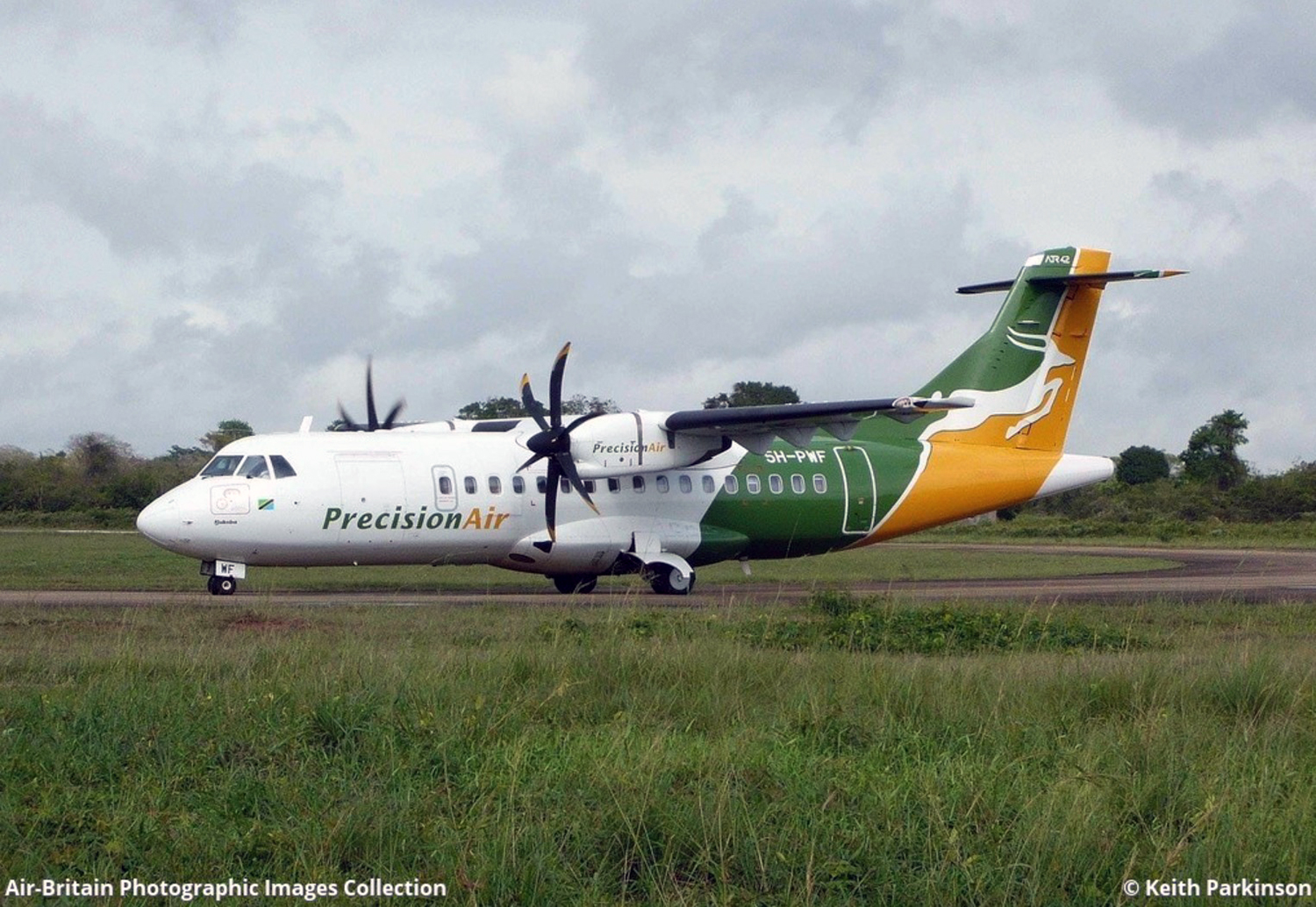
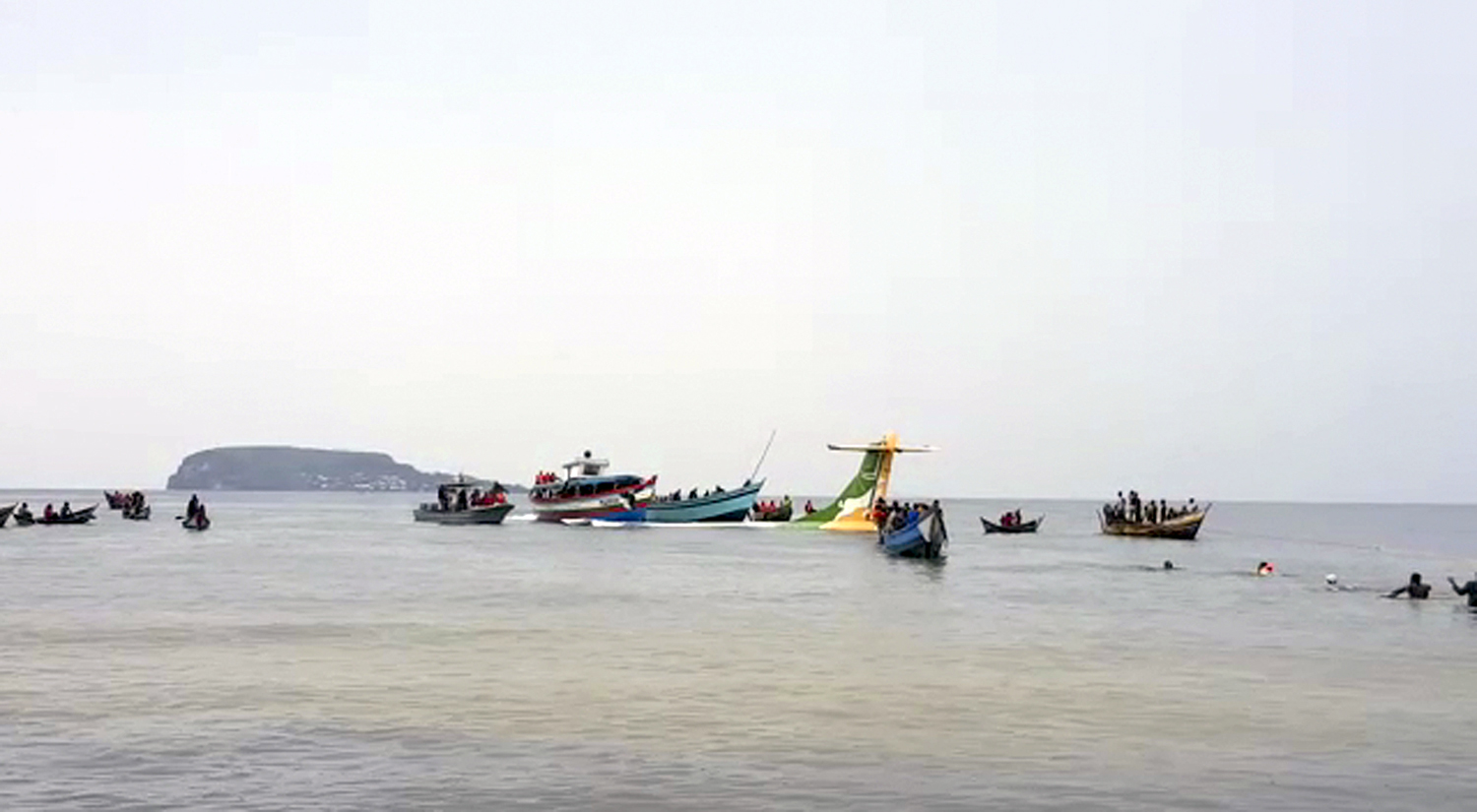
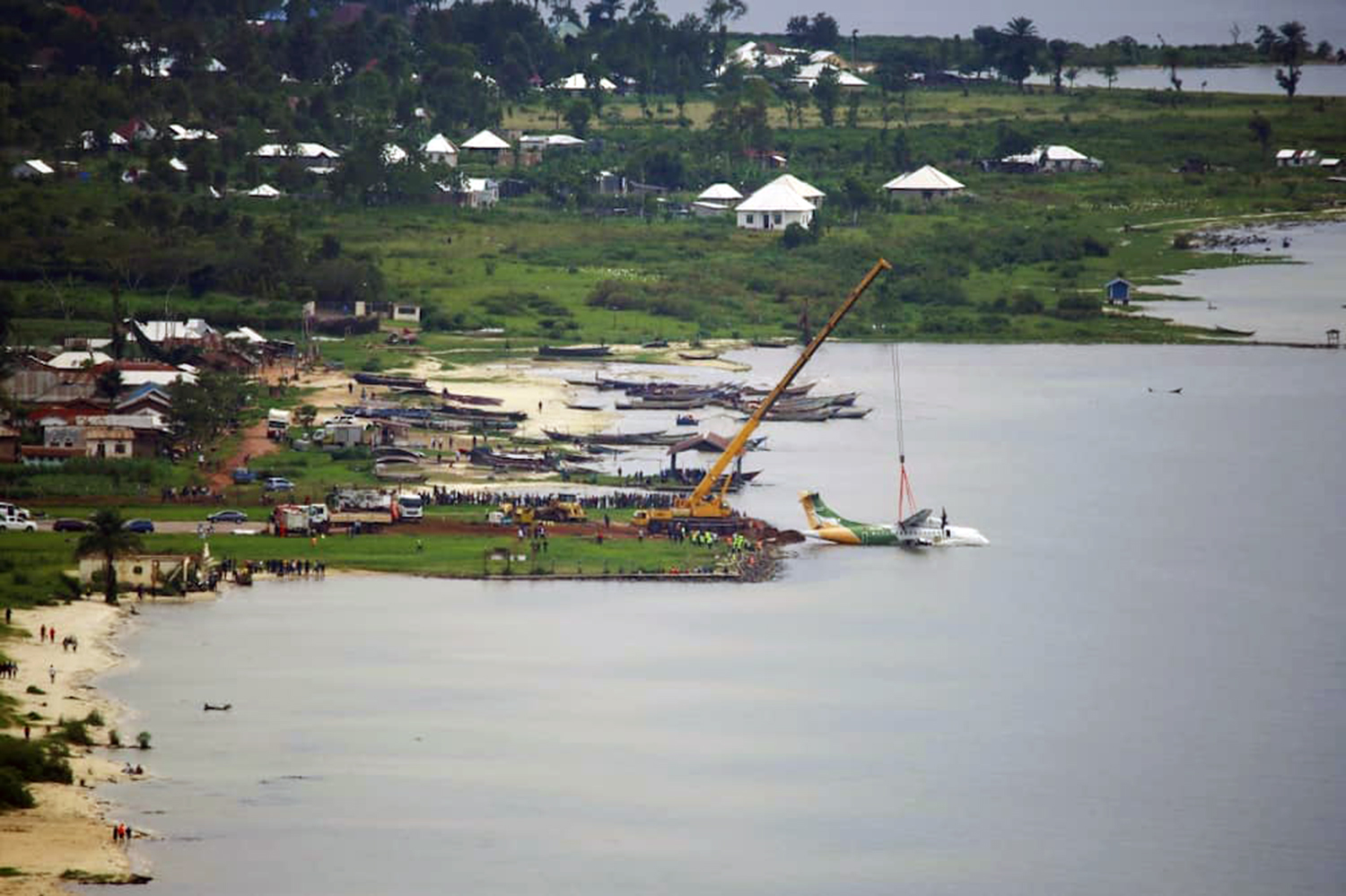

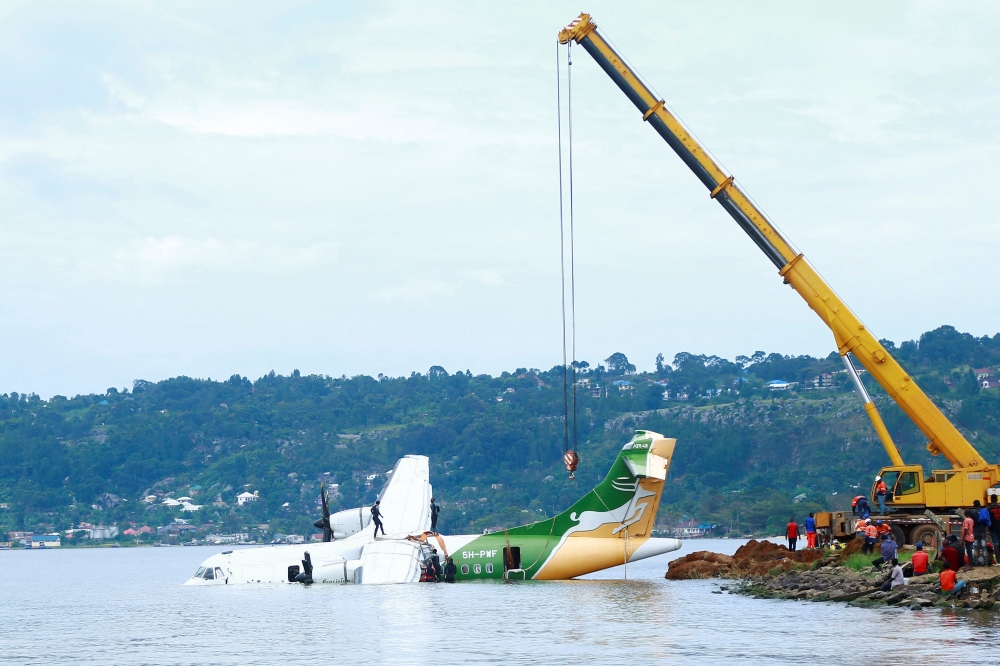
Crash of an ATR42-500 in Gilgit
Date & Time:
Jul 20, 2019 at 0815 LT
Registration:
AP-BHP
Survivors:
Yes
Schedule:
Islamabad – Gilgit
MSN:
665
YOM:
2007
Flight number:
PK605
Crew on board:
4
Crew fatalities:
Pax on board:
49
Pax fatalities:
Other fatalities:
Total fatalities:
0
Captain / Total hours on type:
1210.00
Copilot / Total hours on type:
557
Aircraft flight hours:
22235
Aircraft flight cycles:
22057
Circumstances:
Flight PIA 605 ATR 42-500 aircraft Reg. No. AP-BHP was a scheduled passenger flight from IIAP, Islamabad to Gilgit Airport. There was no abnormality reported in the aircraft prior to the flight. Aircraft loading was within normal limits of 24.7% Centre of Gravity (CG) with Take-off Gross Weight (TOGW) 18,600 kilograms (kg). The aircrew was current and had adequate experience both on the aircraft as well as for flights to Gilgit Airport. Gilgit Airport is located at an altitude of 4,784 ft Above Mean Sea Level (AMSL) with R/W dimensions 5,400 x 100 ft and is deemed fit for operations under PCAA regulations. For this sector, Captain was Pilot Flying (PF) while the First Officer (FO) was Pilot Monitoring (PM). The aircraft took off from IIAP, Islamabad at 02:02 hours (h) and Auto Pilot (AP) was engaged at 260 ft Radio Altimeter (RA) height and the climb was performed under AP using Vertical Speed (VS) mode. This mode is not recommended as per Flight Crew Operations Manual (FCOM). As a consequence the aircraft Indicated Air Speed (IAS) dropped to 130 knots (kt) as opposed to standard climb speed of 160 kt. However, the enroute flight at Flight Level (FL) 165 subsequently remained uneventful. During the cruise, the lowest RA height prior to descent was recorded as 2,636 ft; however, this is in accordance with PIA Standard Operating Procedures (SOPs) for Northern Area flights where minimum separation of 2,000 ft Above Ground Level (AGL) is allowed and considered mandatory due to mountainous terrain. While approaching Gilgit Airport, Captain initiated the descent at 02:36:37 h at the designated point but maintained a higher speed accelerating up to 245 kt as opposed to the standard descent speed of 200 kt as per PIA SOPs. Despite being earlier than planned Estimated Time of Arrival (ETA) for Gilgit Airport, the Captain still elected to maintain higher speeds. The FO pointed out the anomaly of higher-than-normal speed, but Captain did not take any action to bring the aircraft to correct parameters. Moreover, the Enhanced Ground Proximity Warning System (EGPWS) warning also triggered at 02:45:10 h due to higher speeds as the aircraft descended into the valley for Approach. The Approach is mandatorily as per Visual Flight Rules (VFR) whereby the aircrew is to remain visual all the time with the terrain. As Gilgit Airport is located in a valley, Approach for Landing is a visual approach whereby the aircraft executes a base turn to align with the R/W for Landing after Approaching almost perpendicular to the R/W on base leg. This is because a standard Approach is not possible due to the presence of mountains all around. During base leg, at 02:48:54 h Captain announced tail wind picking up, whereas Gilgit Airport was reporting wind as calm. As per data available, the tail wind speed above 1,500 ft AGL was as high as 19 kt; however, it started to reduce progressively with decrease of altitude whereby it reduced to 4-5 kt upon touchdown. Due to high speed maintained by the Captain, the aircraft could not be brought to correct Landing configuration even during base leg. At 02:49:11 h, the Captain asked the FO’s opinion for carrying out a 360° turn to reduce the speed for Landing configuration. However, the FO left the decision to the Captain as, in his opinion, the speed was too high for executing the turn inside the valley. Moreover, as the Captain was more experienced and also his instructor, he trusted the Captain’s judgment and skill to make a successful Landing. Since the FO did not give any opinion on the Captain’s suggestion for a 360° turn, the Captain continued the Approach. As the aircraft continued towards the R/W, Flaps were selected to 15° below 180 kt and 491 ft AGL. Landing Gears (L/G) were lowered immediately after Flaps at 442 ft AGL and speed 174 kt instead of correct speed of 170 kt. Additionally, the Captain made an angling Approach to the R/W instead of executing a correct base turn as per procedure which describes a semi-circular arc. The Flaps came down to 15° position at 257 ft AGL whereas the L/G were in down and locked position only once the aircraft was rolling out on R/W heading at an altitude of approximately 50 ft AGL at a speed of 162-163 kt. Full Flaps could not be lowered and aircraft touched down on the R/W at time 02:47:50 h at approximately 150 kt in Flaps 15° configuration around 2,000 ft down the R/W. After touchdown, the Captain applied brakes, but without using Thrust Reversers. However, aircraft could not be stopped after the Landing Roll and departed from the far end of the R/W coming to a stop at 41 ft from the R/W threshold.
Probable cause:
Primary Causes:
- Involuntary runway excursion due to an intentional high-speed approach and landing by the pilot-in-command (PM).
- Failure to adhere to SOP's.
- Lack of situational awareness and anticipation resulting in inadequate decision making.
Contributing Factors:
- Lack of assertiveness by the pilot-in-command (PM).
- Inadequate application of Crew Resources Management (CRM).
- Involuntary runway excursion due to an intentional high-speed approach and landing by the pilot-in-command (PM).
- Failure to adhere to SOP's.
- Lack of situational awareness and anticipation resulting in inadequate decision making.
Contributing Factors:
- Lack of assertiveness by the pilot-in-command (PM).
- Inadequate application of Crew Resources Management (CRM).
Final Report:




Crash of an ATR42-500 near Havelian: 47 killed
Date & Time:
Dec 7, 2016 at 1620 LT
Registration:
AP-BHO
Survivors:
No
Schedule:
Chitral – Islamabad
MSN:
663
YOM:
2007
Flight number:
PK661
Crew on board:
5
Crew fatalities:
Pax on board:
42
Pax fatalities:
Other fatalities:
Total fatalities:
47
Captain / Total hours on type:
1216.00
Copilot / Total hours on type:
369
Aircraft flight hours:
18739
Circumstances:
On 07 December 2016 morning, after a routine daily inspection at Benazir Bhutto International Airport (BBIAP) Islamabad, Pakistan International Airlines (PIA) aircraft ATR42-500 Reg No AP-BHO operated 05 flights (ie Islamabad to Gilgit and back, Islamabad to Chitral, Chitral to Peshawar and back). As 6th and last flight of that day, it took off from Chitral at time 10:38:50 UTC (15:38:50 PST) with 42 passengers (including 01 engineer) and 05 crew members (03 pilots and 02 cabin crew) aboard for Islamabad. It crashed after 42 minutes of flight at 11:20:38 UTC (16:20:38 PST) about 3.5 Nautical Miles (NM) SSE of Havelian, and 24 NM North of BBIAP Islamabad. All 47 souls aboard were fatally injured. The aircraft remained in air for about 42 minutes before crash (all timings in UTC). These 42 minutes have been split into three stages of flight, described hereunder:
(a) Initial Stage: From 10:38 to 11:04 (~26 minutes) degraded speed governing accuracy of the port propeller was evident in the DFDR data, but was apparently not observed by the cockpit crew. The flight stabilized at an altitude 13,500 feet AMSL and a cruising speed of 186 knots IAS (instead of expected 230 knots IAS). There were two latent pre-existing technical anomalies in the aircraft (a Fractured / dislodged PT-1 blade due to a known quality issue and a fractured pin inside the OSG), and one probable latent pre-existing condition (external contamination) inside the PVM of No 1 Engine. Digital Flight Data Recorder (DFDR) analysis indicates that No 1 Engine was degraded.
(b) Middle Stage (Series of Technical Malfunctions): From 11:04 to 11:13 (~09 minutes), a series of warnings and technical malfunctions occurred to No 1 Engine (left side) and its related propeller control system. These included Propeller Electronic Control (PEC) fault indications, followed by No 1 Engine power loss, and uncontrolled variation of its propeller speed / blade pitch angle abnormal system operation). The propeller speed which was initially at 82% (cruise setting) decreased gradually to 62% and later at the time of engine power loss it increased to 102% (and stayed at that value for about 15 to 18 seconds). It then reduced down to Non Computed Data (NCD) as per DFDR. At this point, (based on simulation results) the blade pitch angle increased (possibly close to feather position). Later, the propeller speed increased to 120% to 125% (probably caused due to unusual technical malfunctions) and stayed around that value for about 40 to 45 seconds. It finally showed an abrupt drop down to NCD again. At this point, (based on simulation results) the blade pitch angle may have settled at a value, different from the expected feathered propeller. During this unusual variation of propeller speed, there were drastic variations in the aircraft aerodynamic behaviour and sounds. The directional control was maintained initially by the Auto-Pilot. A relatively delayed advancement of power (of No 2 Engine) post No 1 Engine power loss, reduction of power (of No 2 Engine) for about 15 seconds during the timeframe when left propeller rpm was in the range of 120% to 125%, and once again a reduction of power towards the end of this part of flight, were incorrect pilot actions, and contributed in the IAS depletion. Auto-Pilot got disengaged. Towards the end of this part of flight, the aircraft was flying close to stall condition. No 1 Engine was already shutdown and No 2 Engine (right side) was operating normal. At this time, IAS was around 120 knots; aircraft started to roll / turn left and descend. Stick shaker and stick pusher activated. Calculated drag on the left side of the aircraft peaked when the recorded propeller speed was in the range of 120% to 125%. During transition of propeller speed to NCD, the additional component of the drag (possibly caused due to abnormal behaviour of left propeller) suddenly reduced. The advancement of power of No 2 Engine was coupled with excessive right rudder input (to counter the asymmetric condition). This coincided with last abrupt drop in the propeller speed. As a combined effect of resultant aerodynamic forces aircraft entered into a stalled / uncontrolled flight condition, went inverted and lost 5,100 feet AMSL altitude (ie from ~13,450 feet to 8,350 feet AMSL).
(c) Final Stage: The final stage of flight from 11:13 to 11:20 (~07 minutes) started with the aircraft recovering from the uncontrolled flight. Although blade pitch position was not recorded (in the DFDR – by design), and it was not possible to directly calculate that from the available data, a complex series of simulations and assumptions estimated that the blade pitch of left propeller may have settled at an angle around low pitch in flight while rotating at an estimated speed of 5%. Aircraft simulations indicated that stable additional drag forces were present on the left side of the aircraft at this time and during the remaining part of flight. Aircraft had an unexpected (high) drag from the left side (almost constant in this last phase); the aircraft behavior was different from that of a typical single engine In Flight Shutdown (IFSD) situation. In this degraded condition it was not possible for the aircraft to maintain a level flight. However, that level of drag did not preclude the lateral control of the aircraft, if a controlled descent was initiated. The aircraft performance was outside the identified performance envelope. It was exceptionally difficult for the pilots to understand the situation and hence possibly control the aircraft. Figure hereunder shows different stages of flight.
(a) Initial Stage: From 10:38 to 11:04 (~26 minutes) degraded speed governing accuracy of the port propeller was evident in the DFDR data, but was apparently not observed by the cockpit crew. The flight stabilized at an altitude 13,500 feet AMSL and a cruising speed of 186 knots IAS (instead of expected 230 knots IAS). There were two latent pre-existing technical anomalies in the aircraft (a Fractured / dislodged PT-1 blade due to a known quality issue and a fractured pin inside the OSG), and one probable latent pre-existing condition (external contamination) inside the PVM of No 1 Engine. Digital Flight Data Recorder (DFDR) analysis indicates that No 1 Engine was degraded.
(b) Middle Stage (Series of Technical Malfunctions): From 11:04 to 11:13 (~09 minutes), a series of warnings and technical malfunctions occurred to No 1 Engine (left side) and its related propeller control system. These included Propeller Electronic Control (PEC) fault indications, followed by No 1 Engine power loss, and uncontrolled variation of its propeller speed / blade pitch angle abnormal system operation). The propeller speed which was initially at 82% (cruise setting) decreased gradually to 62% and later at the time of engine power loss it increased to 102% (and stayed at that value for about 15 to 18 seconds). It then reduced down to Non Computed Data (NCD) as per DFDR. At this point, (based on simulation results) the blade pitch angle increased (possibly close to feather position). Later, the propeller speed increased to 120% to 125% (probably caused due to unusual technical malfunctions) and stayed around that value for about 40 to 45 seconds. It finally showed an abrupt drop down to NCD again. At this point, (based on simulation results) the blade pitch angle may have settled at a value, different from the expected feathered propeller. During this unusual variation of propeller speed, there were drastic variations in the aircraft aerodynamic behaviour and sounds. The directional control was maintained initially by the Auto-Pilot. A relatively delayed advancement of power (of No 2 Engine) post No 1 Engine power loss, reduction of power (of No 2 Engine) for about 15 seconds during the timeframe when left propeller rpm was in the range of 120% to 125%, and once again a reduction of power towards the end of this part of flight, were incorrect pilot actions, and contributed in the IAS depletion. Auto-Pilot got disengaged. Towards the end of this part of flight, the aircraft was flying close to stall condition. No 1 Engine was already shutdown and No 2 Engine (right side) was operating normal. At this time, IAS was around 120 knots; aircraft started to roll / turn left and descend. Stick shaker and stick pusher activated. Calculated drag on the left side of the aircraft peaked when the recorded propeller speed was in the range of 120% to 125%. During transition of propeller speed to NCD, the additional component of the drag (possibly caused due to abnormal behaviour of left propeller) suddenly reduced. The advancement of power of No 2 Engine was coupled with excessive right rudder input (to counter the asymmetric condition). This coincided with last abrupt drop in the propeller speed. As a combined effect of resultant aerodynamic forces aircraft entered into a stalled / uncontrolled flight condition, went inverted and lost 5,100 feet AMSL altitude (ie from ~13,450 feet to 8,350 feet AMSL).
(c) Final Stage: The final stage of flight from 11:13 to 11:20 (~07 minutes) started with the aircraft recovering from the uncontrolled flight. Although blade pitch position was not recorded (in the DFDR – by design), and it was not possible to directly calculate that from the available data, a complex series of simulations and assumptions estimated that the blade pitch of left propeller may have settled at an angle around low pitch in flight while rotating at an estimated speed of 5%. Aircraft simulations indicated that stable additional drag forces were present on the left side of the aircraft at this time and during the remaining part of flight. Aircraft had an unexpected (high) drag from the left side (almost constant in this last phase); the aircraft behavior was different from that of a typical single engine In Flight Shutdown (IFSD) situation. In this degraded condition it was not possible for the aircraft to maintain a level flight. However, that level of drag did not preclude the lateral control of the aircraft, if a controlled descent was initiated. The aircraft performance was outside the identified performance envelope. It was exceptionally difficult for the pilots to understand the situation and hence possibly control the aircraft. Figure hereunder shows different stages of flight.
Probable cause:
The following factors were reported:
Probable Primary Factors:
(a) The dislodging / fracture of one PT-1 blade of No 1 Engine triggered a chain of events. Unusual combination of fractured / dislodged PT-1 blade with two latent factors caused off design performance of the aircraft and resulted into the accident.
(b) The dislodging / fracture of PT-1 blade of No 1 Engine occurred after omission from the EMM (Non-Compliance of SB-21878) by PIA Engineering during an unscheduled maintenance performed on the engine in November 2016, in which the PT-1 blades had fulfilled the criteria for replacement, but were not replaced.
(c) Fracture / dislodging of PT-1 blade in No 1 Engine, after accumulating a flying time slightly more than the soft life of 10,000 hrs (ie at about 10004.1 + 93 hrs) due to a known quality issue. This aspect has already been addressed by re-designing of PT-1 blades by P&WC.
Probable Contributory Factors:
(a) A fractured pin (and contamination inside the OSG), contributed to a complex combination of technical malfunctions. The pin fractured because of improper re-assembly during some unauthorized / un-documented maintenance activity. It was not possible to ascertain exact time and place when and where this improper re-assembly may have occurred.
(b) Contamination / debris found in overspeed line of PVM of No 1 Engine probably introduced when the propeller system LRU"s were not installed on the gearbox, contributed to un-feathering of the propeller. It was not possible to ascertain exact time and place when and where this contamination was introduced.
Probable Primary Factors:
(a) The dislodging / fracture of one PT-1 blade of No 1 Engine triggered a chain of events. Unusual combination of fractured / dislodged PT-1 blade with two latent factors caused off design performance of the aircraft and resulted into the accident.
(b) The dislodging / fracture of PT-1 blade of No 1 Engine occurred after omission from the EMM (Non-Compliance of SB-21878) by PIA Engineering during an unscheduled maintenance performed on the engine in November 2016, in which the PT-1 blades had fulfilled the criteria for replacement, but were not replaced.
(c) Fracture / dislodging of PT-1 blade in No 1 Engine, after accumulating a flying time slightly more than the soft life of 10,000 hrs (ie at about 10004.1 + 93 hrs) due to a known quality issue. This aspect has already been addressed by re-designing of PT-1 blades by P&WC.
Probable Contributory Factors:
(a) A fractured pin (and contamination inside the OSG), contributed to a complex combination of technical malfunctions. The pin fractured because of improper re-assembly during some unauthorized / un-documented maintenance activity. It was not possible to ascertain exact time and place when and where this improper re-assembly may have occurred.
(b) Contamination / debris found in overspeed line of PVM of No 1 Engine probably introduced when the propeller system LRU"s were not installed on the gearbox, contributed to un-feathering of the propeller. It was not possible to ascertain exact time and place when and where this contamination was introduced.
Final Report:
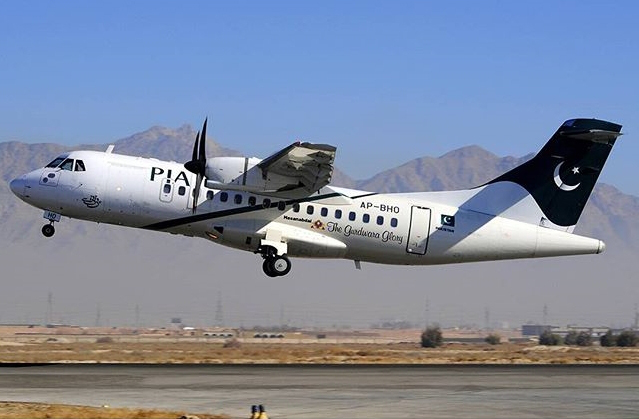

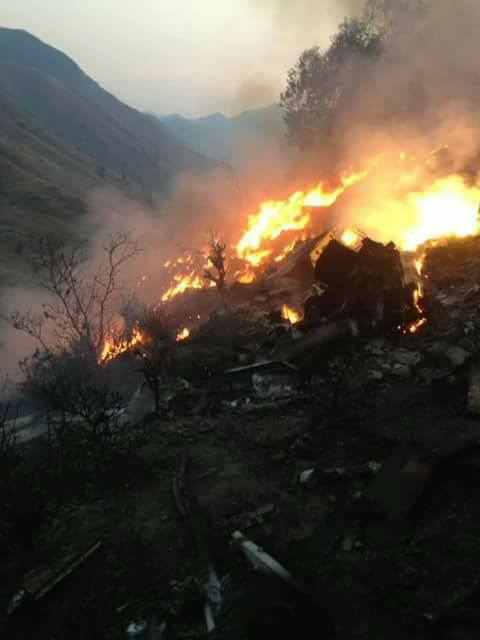
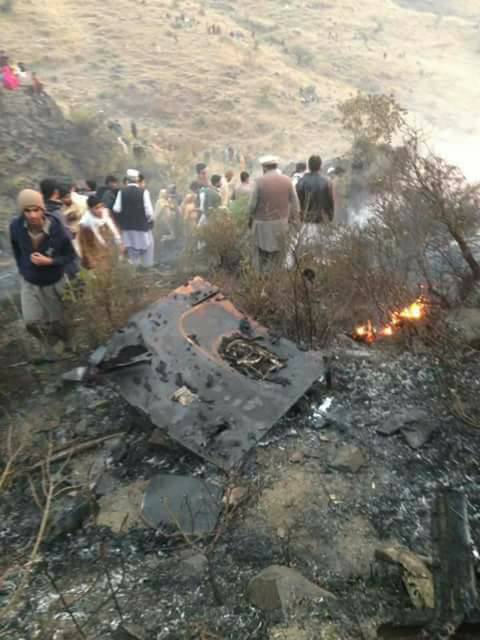

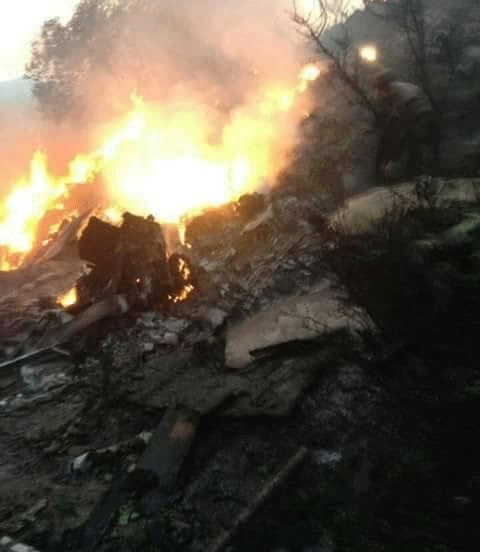
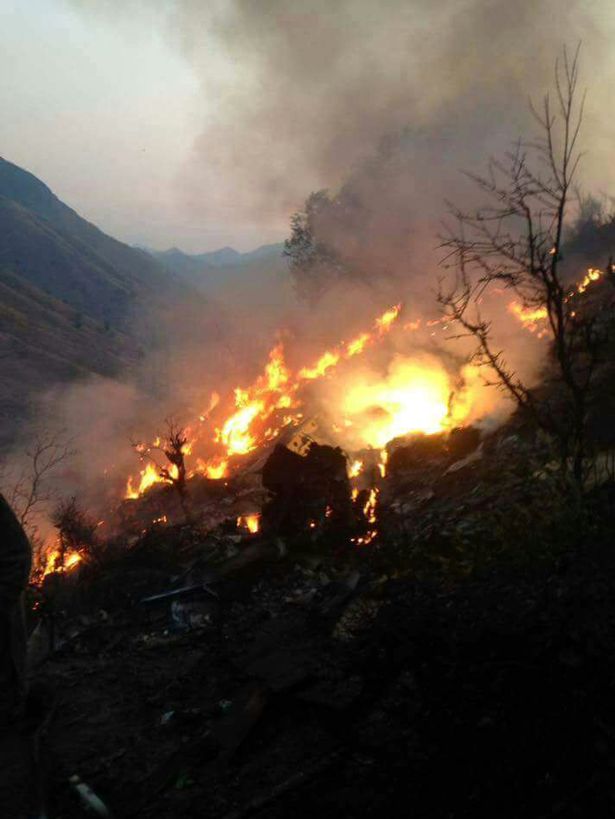
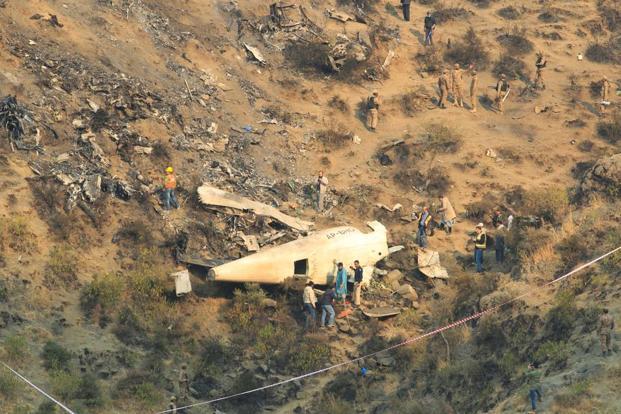
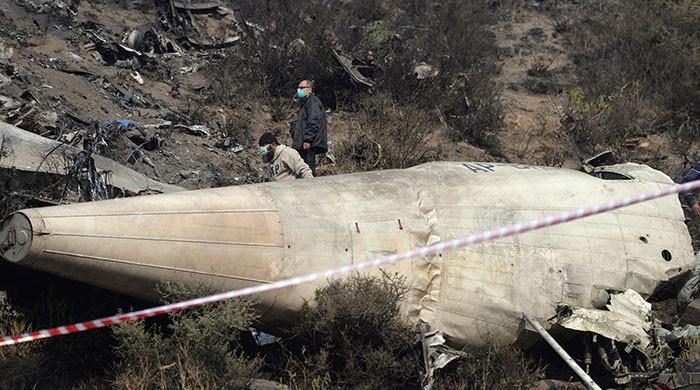

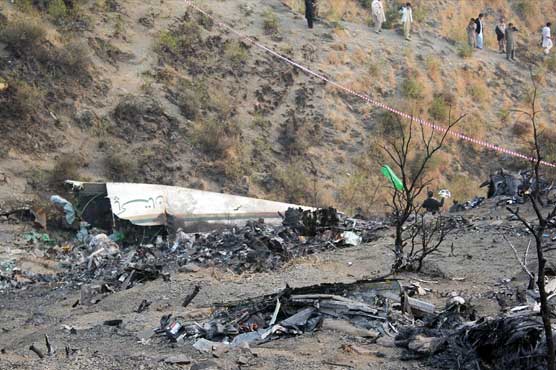
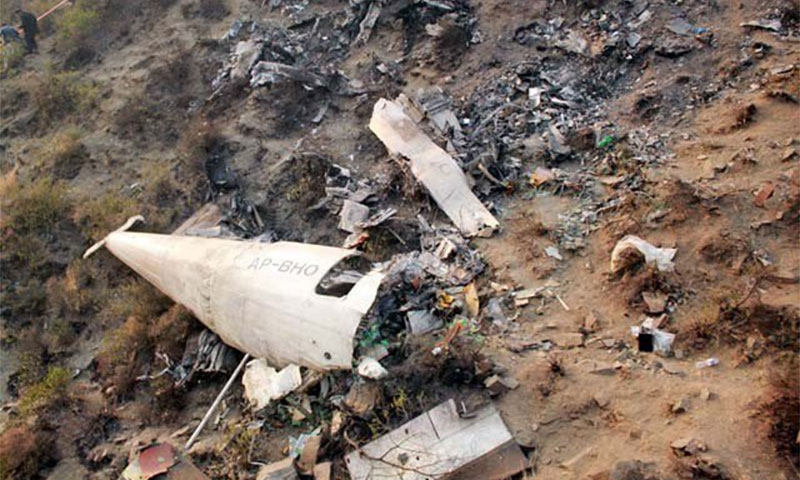
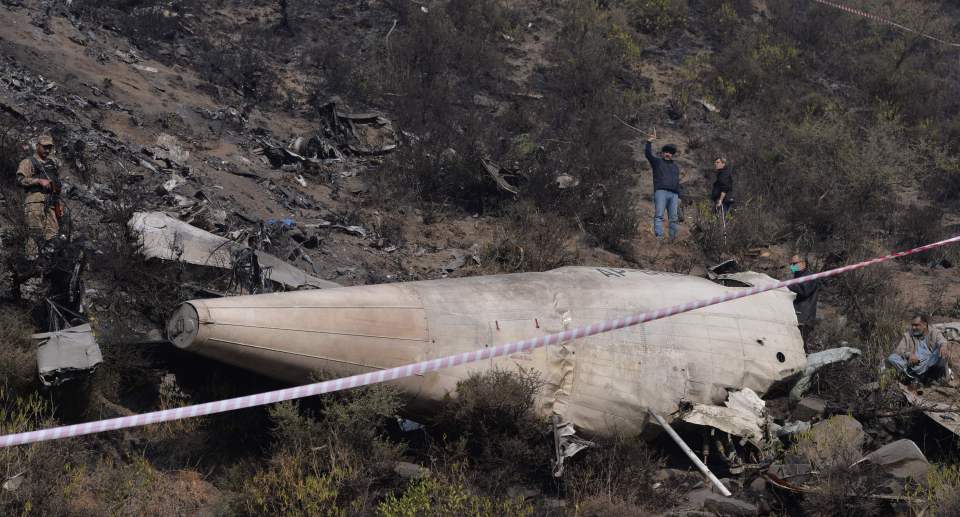

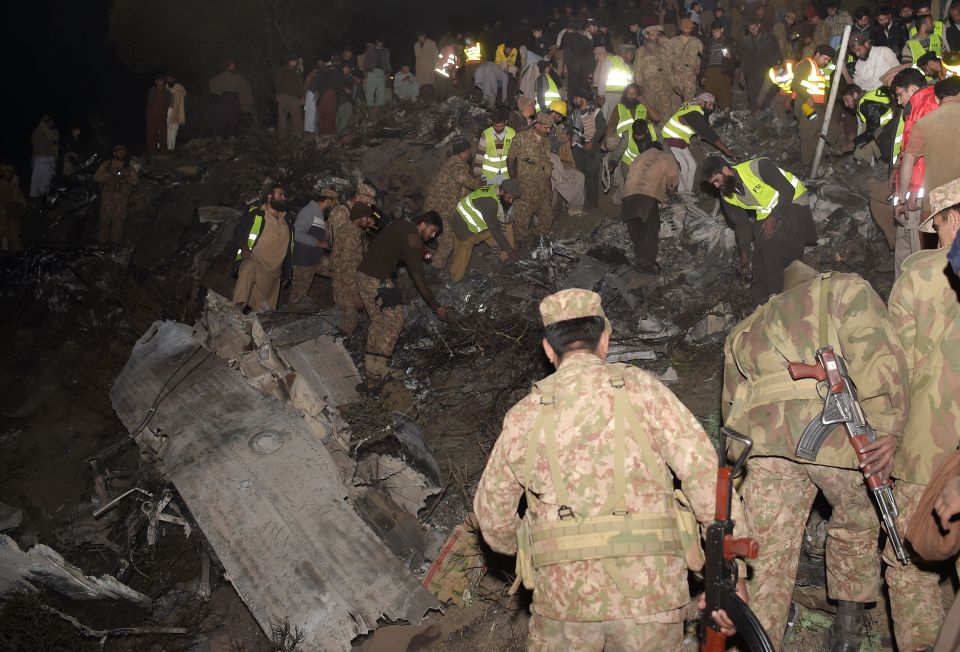
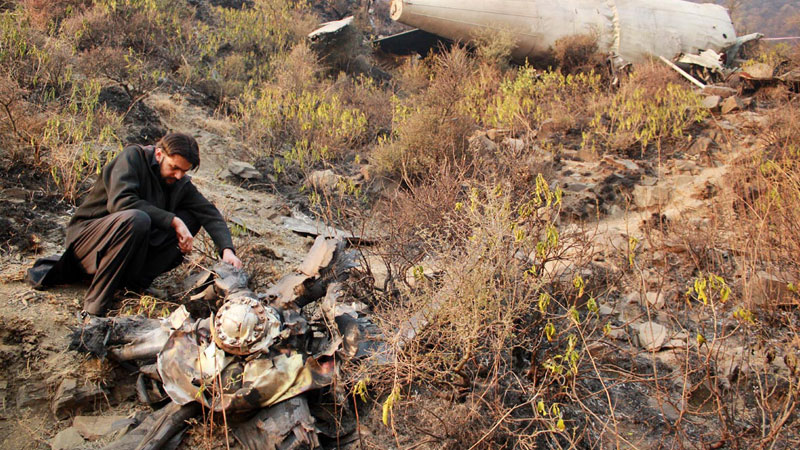
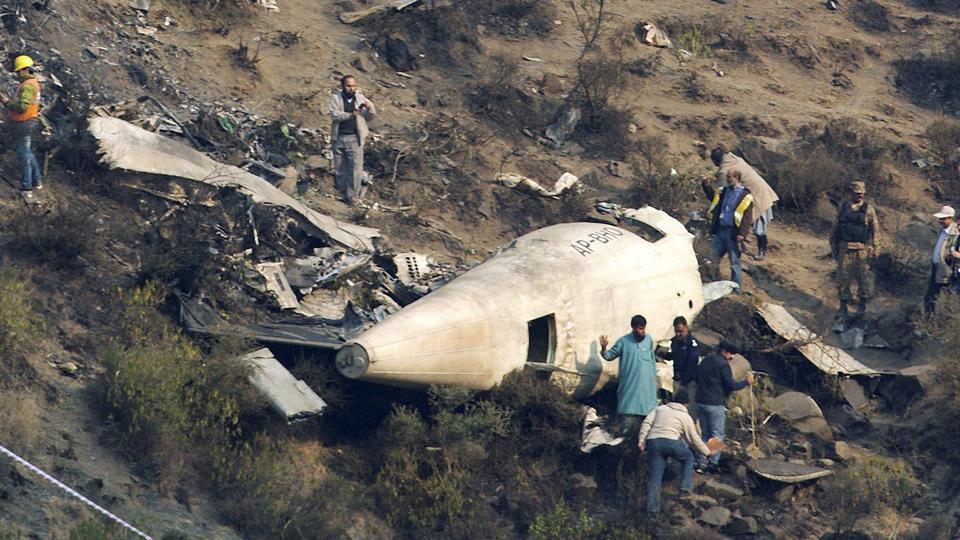
Crash of an ATR42-500 in Coari
Date & Time:
May 30, 2014 at 2055 LT
Registration:
PR-TKB
Survivors:
Yes
Schedule:
Coari - Manaus
MSN:
610
YOM:
2000
Crew on board:
4
Crew fatalities:
Pax on board:
45
Pax fatalities:
Other fatalities:
Total fatalities:
0
Captain / Total hours on type:
2601.00
Copilot / Total hours on type:
548
Circumstances:
During the takeoff roll from Coari-Urucu Airport by night, the aircraft collided with a tapir that struck the right main gear. The crew continued the takeoff procedure and the flight to Manaus. After two hours and burning fuel, the aircraft landed at Manaus-Eduardo Gomes Airport. Upon touchdown, the right main gear collapsed and the aircraft veered to the right and came to rest. All 49 occupants evacuated safely while the aircraft was damaged beyond repair.
Probable cause:
Collision with a tapir during takeoff, causing severe damages to the right main gear.
The following findings were identified:
- The lack of isolation of the operational area allowed the land animal to enter the runway for landings and takeoffs, contributing to the accident.
- The crew did not notice the presence of the land animal on the runway early enough to abort the takeoff without extrapolating the runway limits and avoiding collision.
- The presence of the land animal (Tapirus terrestris) interfered with the operation and led to the collision of the right main landing gear.
The following findings were identified:
- The lack of isolation of the operational area allowed the land animal to enter the runway for landings and takeoffs, contributing to the accident.
- The crew did not notice the presence of the land animal on the runway early enough to abort the takeoff without extrapolating the runway limits and avoiding collision.
- The presence of the land animal (Tapirus terrestris) interfered with the operation and led to the collision of the right main landing gear.
Final Report:

